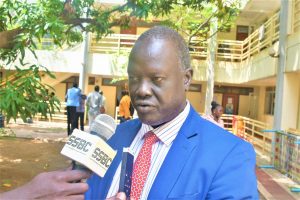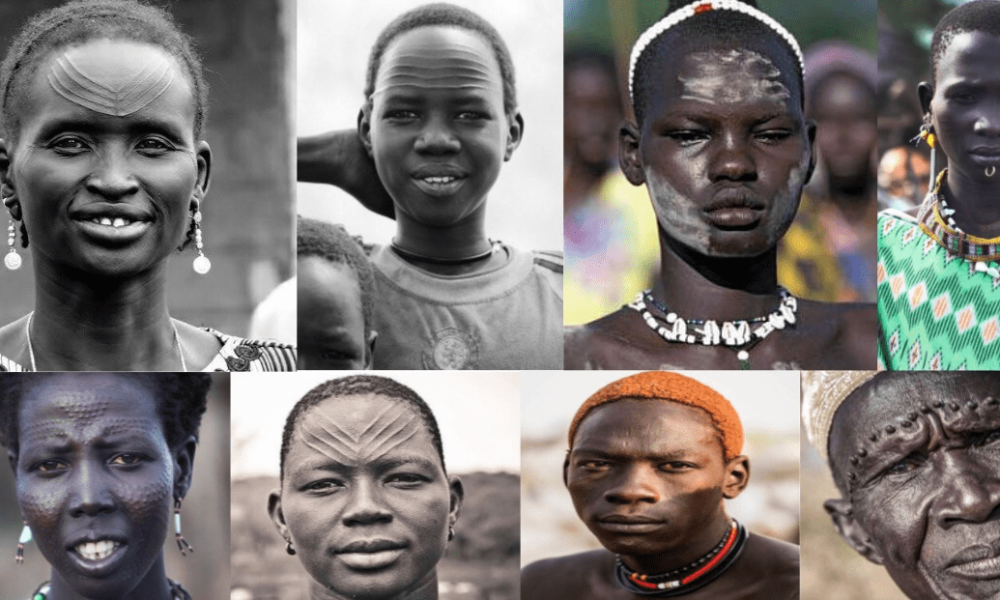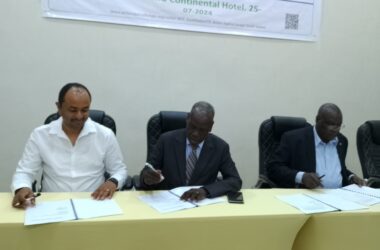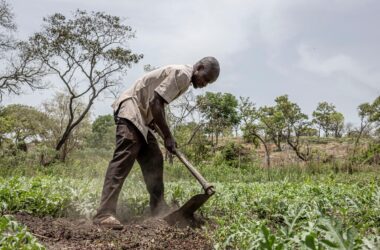By William Madouk
Whether the ethnic diversity in South Sudan is sixty-four tribes or not was a dominating question that beat participants’ minds during a one-day consultative meeting on intangible cultural heritage.
Since the nascent country gained its independence in 2011, most government officials, including citizens, have claimed that South Sudan has at least 64 tribes or ethnic groups, without any reliable literature.
Many, without exception, believe this presumption, but no official gov’t statistic, document or research supports it.
This now puts the ball in cultural researchers’ court to conduct an independent study and find out how many tribes exist in the country.
It all started when Thomas Muto, deputy chair of the Kakuwa Community, inquired about the genesis of 64 tribes, which many believe to be true, adding that he traced texts with the Bureau of Statistics and the Ministry of Culture, but none exist.
“My question to the Ministry of Culture is: Can we as South Sudanese continue saying that we are 64 tribes without having data, or how do you advise us as people? Within the government entities, which entity is supposed to have that data?” Mr. Muto inquired.

Undersecretary at the Ministry of Culture, Museums & National Heritage, Kuac Wek [photo by William Madouk]
Replying to him, the undersecretary at the Ministry of Culture, Museums, and National Heritage, Kuac Wek, said he himself is baffled by the same issue, assuming that it could be a political statement.
“My question is, who came up with 64 tribes? Up until now, I can’t even trace how it came about,” he said, “but let us say it is a political statement that was invented by some people.”
“So, from the Ministry of Culture, there is no document that says we are sixty-four tribes. For me, until I see the document,” he added.
Mr. Wek said there was no data or study that had been carried out, thus imploring the researchers to do research and come out with accurate and reliable data.
He advised scholars to kick off with the Raja conference and get data on the recognized tribes and languages during that time.
“Always, I avoid saying we are 64 tribes; I say we are so many that the research is not available,” he noted. “This is a rich area for the researchers on culture and heritage; this is a green area that somebody can make money out of.”
“We need to team up, come up, and see how we can document it, generalize it, and present it to our society and world academia so that it is known,” he continued.
Wek painted a dark picture after encountering a lack of official data when he was asked to give a presentation on a country’s population, economy, and so forth at the India festival, but his counterpart from Sudan presented all official documents.
“The literature is published by the ministry of information for any country, and these are called official documents, such as maps, economic, and statistical information,” he clarified.
Mr. Wek called on the Committee on Culture, Music, and Cultural Heritage to enact policies and legislation that safeguard and promote national traditions.
“Operating without policies is one of the challenges, but now some policies are available. The policy on cultural heritage and copyright was passed and is waiting to be assented to, by the president. And other laws are coming.”
He further called for teamwork and ways of developing the capacity of staff in order for them to execute their profession effectively.

Topotha tribe [photo courtesy]
The ethnicity of South Sudan is richly diverse. Many of these ethnic groups share a common culture and very closely link cultural traits with intelligible languages, which form distinct larger family units.
The people of South Sudan are broadly grouped into three ethnic groups: Nilo-Sudanic tribes, Nilo Hermits tribes, and Bantu.
Among the tribes one will meet and encounter in South Sudan are Mundari, Dinka, Bari, Toposa, Nuer, Shilluk, and many more. Some tribes are known to be cattle keepers, while others are farmers.
On Wednesday, the Ministry of Culture held a one-day review session to share information on how to prepare the 6-year periodic. It drew together civil society, community leaders, NGOs, and academia, among others, to brainstorm on how to preserve culture.
Mr. Badagbu Daniel, secretary for culture and information at the SPLM national secretariat, said South Sudanese need to own their intangible cultural heritage.
“To be South Sudanese, we must know our culture, and that is going to show the world that we are South Sudanese when we ‘South Sudanize’ ourselves,” said Mr. Daniel, who also holds a position in the Azende community.
To him, the restoration of the Azende kingdom after 117 years was a good example of preserving traditional values.
“These rich cultures that we had 117 years ago, we have to bring them now to the present so that we can keep, preserve, and promote them for the next generation to benefit from them.” He noted.
Luka Deng Anyuon, chair of the Duluit-Bol Deng community in Juba, said there are so many beautiful traditional dances that need to be protected through documentation by the cultural docket.
“In social media, we can see many beautiful traditional dances, but there is no documentation. So, we are asking our minister to institutionalize these beautiful cultures,” he urged.
Mr. Deng Nhial, acting director general at the ministry of culture, said the best treaty for South Sudan is the UNESCO Convention of 2003 because of its fresh culture, music, and intangible heritage.
Mr. Nhial cited that South Sudan ratified three conventions: the 1972 World Heritage Convention, the 2003 UNESCO Convention for the Safeguarding of Intangible Cultural Heritage, and the 2005 UNESCO Convention on the Protection and Promotion of Cultural Diversity.




